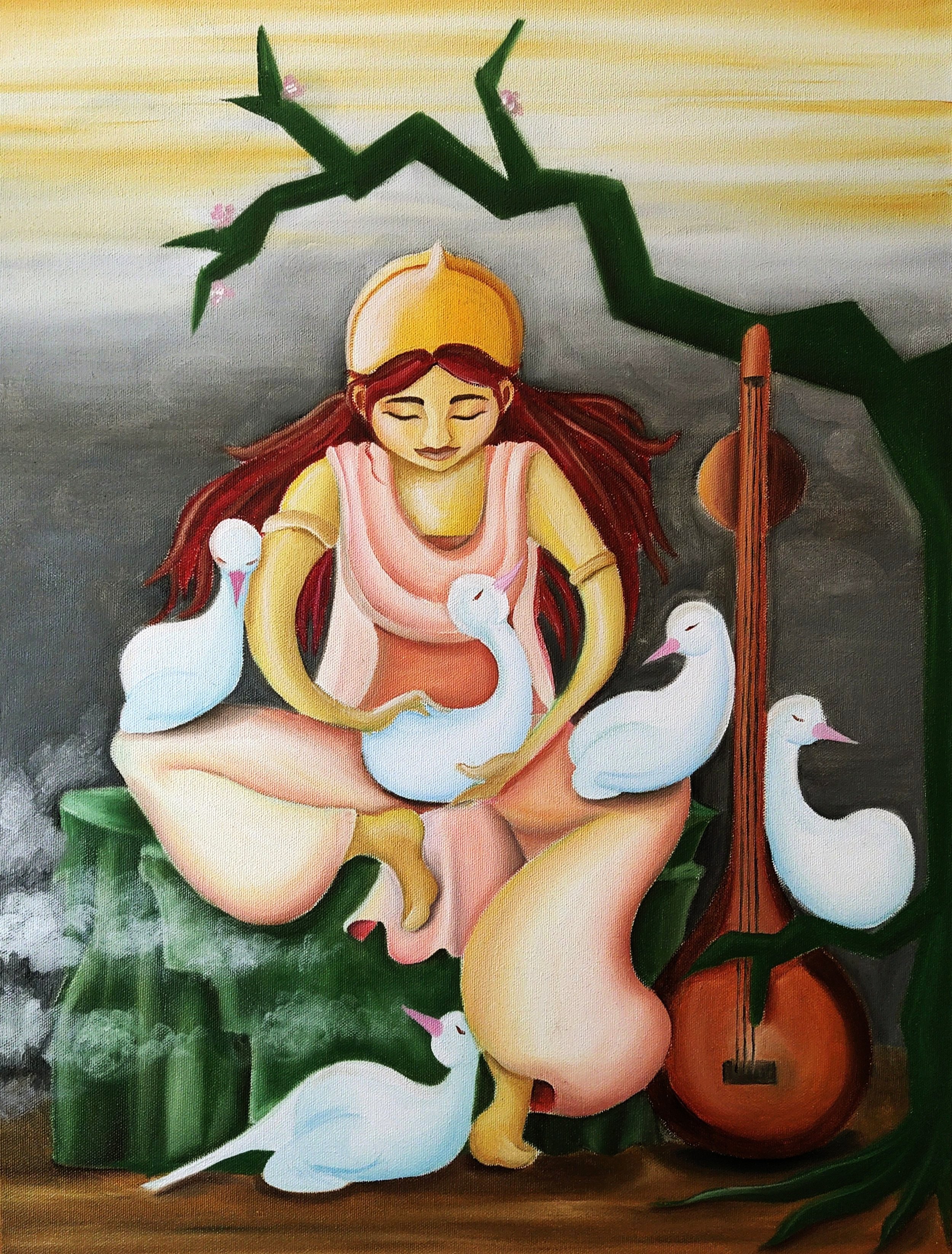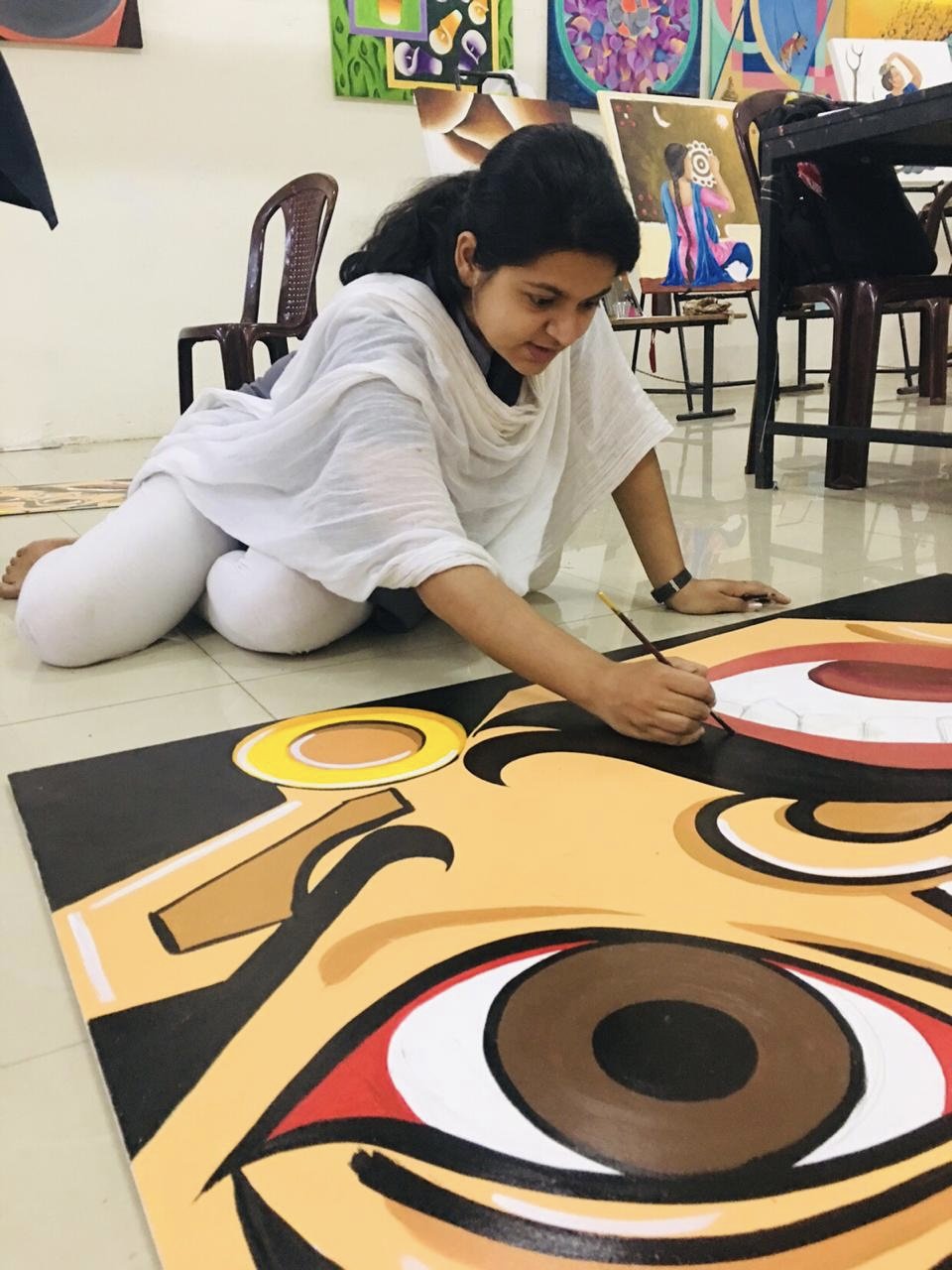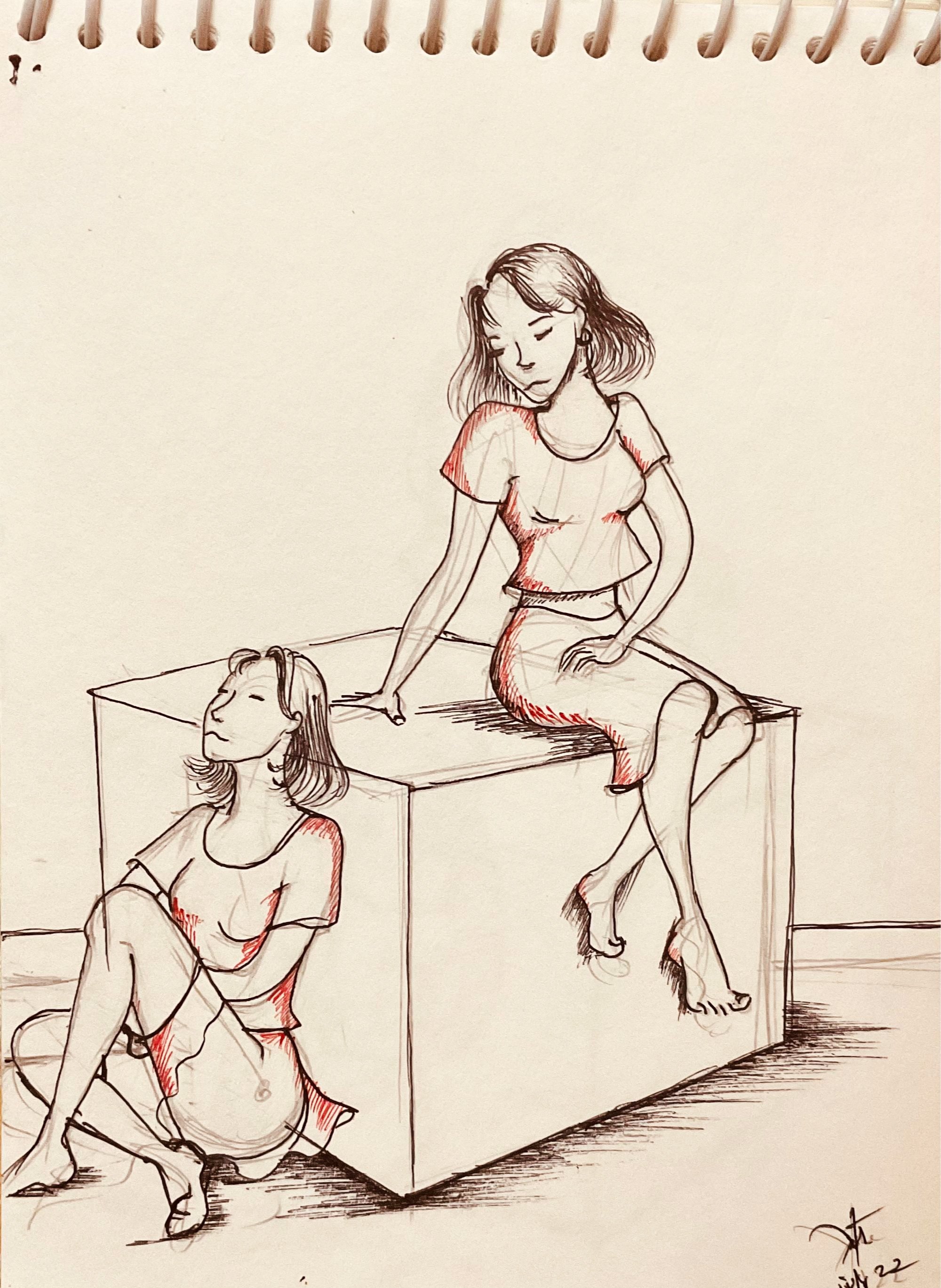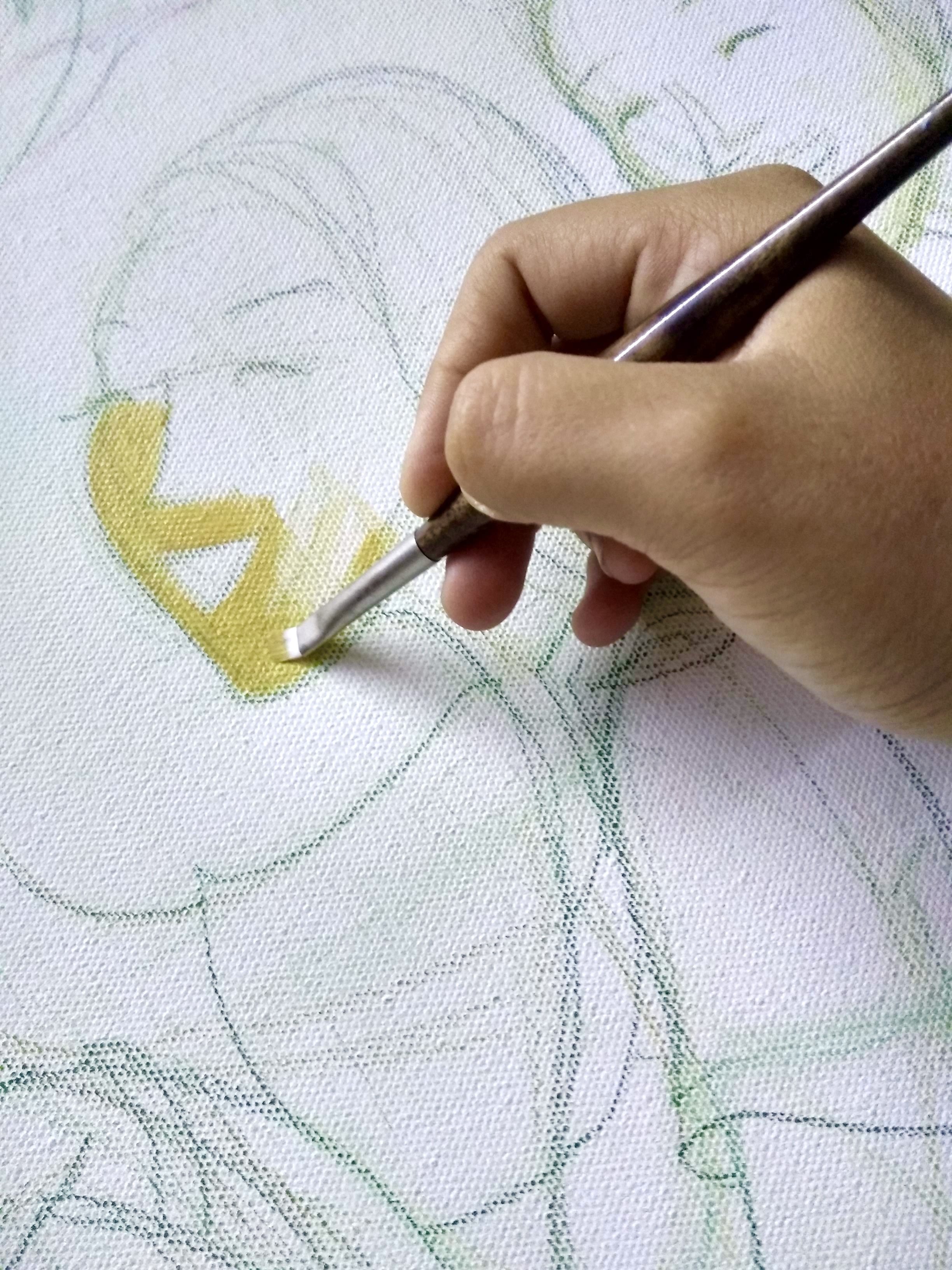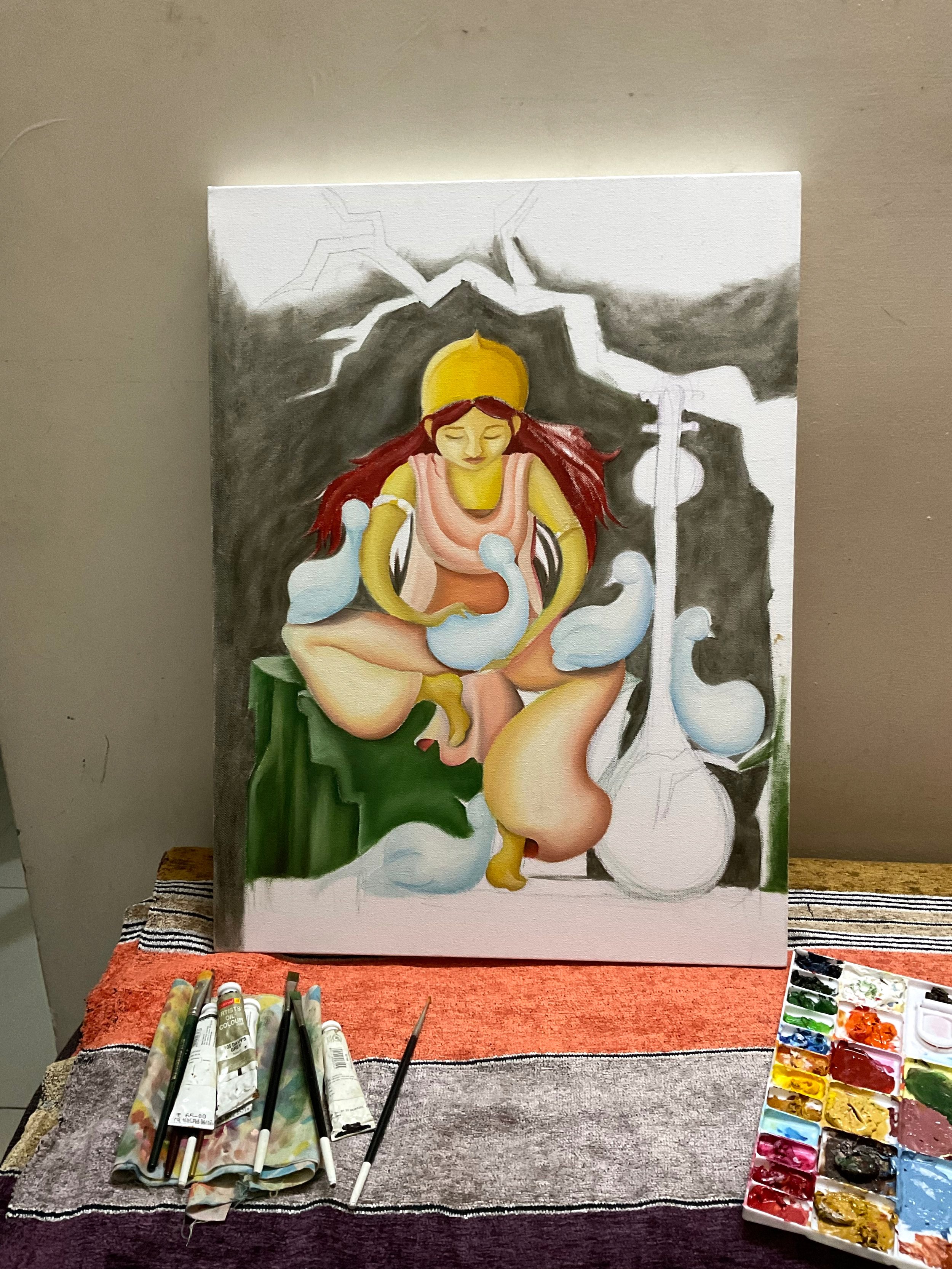Interview
Rishika Sharma
Rishika Sharma is a fine artist and art educator based in Madhya Pradesh state, in the heart of India. She lives in the city of Indore, famous for its food and delicacies.
She has both a Bachelor’s and Master’s degree in fine art (painting) with a focus on oil painting, principles of art, and Indian art history.
Rishika works as a postgraduate teacher, guiding Grade 11-12 students through the principles of art and Indian art history. She’s also active in big panel painting, crafts, typography and brushing during cultural festivals and functions all year round, which excites her and keeps her on her toes.
In her leisure time, Rishika sings her heart out and creates pencil sketches or watercolor illustrations. She tries to sketch at least one image daily to keep herself happy and fluent.
Rishika regards herself as a scholar of life, contemplating on ways to make it simpler and easier. She asserts that everyone’s aim is to be happy, irrespective of the ups and downs of life.
What is your background and how did you start your journey in the art world?
“Art is one of my most important motivators that make me feel alive. I’ve had a connection with art since my early childhood, starting with drawings of girls wearing various dresses and hairstyles. In school, I heard my primary teachers talking about me becoming an artist one day.
I was a science student but throughout my education, my drawing and imagination never stopped. In high school, I enjoyed sketching and painting with poster colors, watercolors, oils, and acrylics. I also tried my hand in dry and oil pastels, charcoal, and printmaking. Regular participation in drawing competitions and creative practices kept my passion for art alive, and I constantly fluctuated between wanting to become a dress designer and an artist. Ultimately, my inclination towards hues led me to a fine art education.
I started with scenes from either my daily life or the trips I’d made. Later, my paintings turned towards figures, depicting the synchronicities between music and art. I have a deep connection with music, which is portrayed in my art.
I’ve been through times in life that required me to have a lot of patience, and in such times, my art took that turn. So my artworks ask for patience because most of what I create depends on how I face life — what it teaches me or the message I want to spread.”
What does your work aim to say? Does it comment on any current social or political issues?
“My work is a blend of rhythmic lines with vibrant colors mostly from an Indian color palette. It also has perspective, human figures and nature as vital aspects.
It primarily talks about the harmony between human, nature, and music. The art tries to drag you out from your busy schedule so you can acknowledge your real purpose in life—happiness. With their highly stressful jobs, people today have no time to think about happiness. Most of them seem to have forgotten about their purpose in life, and thatʼs what my art wants to remind them.
Another big theme is patience. I have a series of approximately 80+ sketches developed during the lockdown which focus on being patient and going with the flow during tough times,.
Through my artworks, I aim to say that art is everywhere: in the music people hear, in the movies they watch every weekend, in the interior decor of the lavish cafes they hang out in, and of course, in the wall paintings they drew when they were children, just like their children are doing now. I don’t agree with the people—especially the younger generation—who don’t acknowledge that art is an inseparable part of life. I find it unfortunate that they overlook the vast art history in front of them, both from India and the world.”
“My artworks depict happiness and states of trance, with whispers of places I’ve been to in the past.
Most of my sketches are based on musical trance, patience, affection, color, nature, and harmony.”
Which current art world trends are you following?
“Trends are cyclical—here today, gone tomorrow, and back again the next day. Instead, I’m often tempted to go back to the old styles, especially the Indian and Western Renaissance, which have my heart. I’m also drawn to new contemporary art techniques like splattering, impasto, geometrical compositions, and the latest interior design elements. What amazes me the most is the current digital painting techniques, which I’m trying to inculcate into my practice.
The latest advancements in architecture and interior designs inspire me, and without even planning to, I end up including some geometric aspects in my paintings. Nowadays, when I see geometrical elements in artworks, I’m reminded of Cubism.
Lastly, I love perspective in art. Most of my paintings include depth, and varying points of view and camera angles.”
Do you plan your work in advance or it is improvisation?
“I would say I plan a little before painting anything, but it’s inevitable that things ultimately proceed in their own way. I rarely go directly onto the canvas; only when spraying or splattering acrylic paints.
Before my date with the canvas, I usually begin by sketching and picking out a color scheme on paper. Then I proceed with changes in hues or tints as per the intuitive demands in between. Things always change from what we have planned. What you apply in the foreground has a big impact on how the background will be, and thatʼs where the changes occur.
However, with my sketches, itʼs the total opposite. I start out each sketch with only a pencil and piece of paper—no thought in mind—and it comes out effortlessly. Through all these years, thatʼs the one area where my improvisation skills shine through. I see it as spontaneity amidst all the planned processes.”
What process, materials and techniques do you use to create your artwork?
“I work with oil paints—my specialization—Luna Staedtlers, and watercolor pencils. I work in various media such as pastels, pencils, posters, watercolors, and charcoal, depending on the situation and mood. I rarely worked with acrylics, but nowadays I find that my current work demands it. For under drawing on the primed canvases, I prefer color pencils instead of graphite. In my small experiments, I prefer using angular, bright, and filbert brushes and knives. Even though I like impasto, I prefer thin color application. In this way, I also try the dry brush application to create transparency in my paintings.
Instead of completing one part at a time, I work on all the parts of the painting simultaneously, keeping all components in harmony. It’s odd how my laziness drives me to prepare colors with what is left over in the palette, and that’s how I get some unplanned new tones!
I rarely use linseed oil, and prefer synthetic brushes. I love knives even though I’m just learning how to use them.
For my pen sketches and drawings, I mostly work with brush pens—pens with a water refill system. I enjoy how magical it gets when the water-loaded brush touches the dry water color and, boom, bliss happens!”
What does your art mean to you?
“First, I create art. Then, it defines me. In that way, it acts as my radio station to the world.
My art is a way for me to express myself and to share with the world what I’ve learnt from this small life. My art is the light at the end of the tunnel—a stick for me in my old age. I’ve learnt to respect myself and have gained confidence with my art, and that’s what I thank God for every day.
My art is the source of my strength and inspiration. It’s my healer and friend for life. My art is my way of living life.”
What’s your favorite artwork and why?
“I love almost all the artworks from the Italian, French and Netherlandish Renaissance.
If I were to choose one favorite artwork, it would be Water lilies by Claude Monet. I admire the series of huge paintings: the color scheme, knife strokes, and process he followed while making those artworks; and choosing a boat as his studio. The bold use of fresh white is amazing. I adore the dedication and willpower he had in giving his everything to his art. Those years of effort are impossible to match.”
Have you had any noteworthy exhibitions you'd like to share?
“I’ve participated in many exhibitions throughout India under a group named VAYAM. These are the two I consider most noteworthy:
2022 - Mumbai Art Fair, at Nehru center, Mumbai.
2019 - Global Art Fair, at World trade centre in Mumbai and also in Dubai.”
Instagram: @sunbeam_rs


